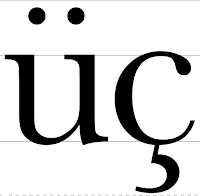The Anatomy of Type
Type & Typefaces
Type is the physical embodiment of lettering. A typeface may include letters, numerals, punctuation and various symbols known as glyphs. The recognised definition of a typeface is an artistic interpretation or design of a collection of alphanumeric symbols. It is also usually grouped together like a family it contains individual fonts for italic bold and other variations.
Fonts (Founts)
The set of characters within a given typeface. Font refers to the physical embodiment whereas typeface refers to the design or how it looks.
Lettering
Basically illustrations of letters, words and phrases. This is very different to typeface design and for lettering designers do not illustrate the whole alphabet in a certain style but illustrate a word as a separate image. Whereas typeface designers work completely differently. They create a system of letters that work together and can be re-arranged in many ways.
Letter Designer Jessica Hische (2016)
Cap-height
The height from the baseline to the top of the uppercase letters this does not include diacritics.
x-height
This is the height of lowercase letters not considering ascenders or descenders. The relationship of x-height to the body of type defines the type size.
Baseline
This is known as the imaginary line on which a font appears to rest.
Serif
Known as the extra stoke on the edges of a letterform some are vertical but some are also horizontal.
Bracket
The bracket is a curved like connection
between the stem and serif of some fonts. They can usually be found on old-style or transitional serifs. Not all
serifs are bracketed serifs, e.g. Didot is not.
Old Style/Transitional Examples:
Baskerville, Caslon & Times New Roman
Rational Serif:
Didot
Bodoni
Sans Serif
This term comes from the French word "sans" which means without. Therefore Sans Serif fonts are without serifs at end of strokes (terminals.)
Italic
A slanted type style taking its basic shapes from stylised handwriting usually it makes the type appear narrower than the normal style of the font. They are commonly used for emphasising text and also primarily found in serif fonts.
Oblique
This is a slanted typeface but mechanically sheared completely different to italics that are drawn and handcrafted separately.
Descender
The part in a lowercase letter that extends below the baseline e.g. j or p. Some descenders also have specific names.
Ascender
The part of a lowercase letter that ascends over the x-height e.g. b, d or f. Some ascenders also have specific names.
Uppercase
The capitals within a typeface. The name refers to the times of metal type, the capitals were kept in the upper part of the type case.
Counter
The enclosed area or negative space within a circular or curved letterform e.g. o or d.
Eye
Similar to a counter although specific to the negative space captured within the letter of a lowercase "e."
Bowl
A curved part of a character that encloses the curved parts or (counter) e.g. d, b or o.
Aperture
Partially enclosed slightly rounded negative space in some characters e.g. n, e or a.
Crossbar
Usually the horizontal stroke across an uppercase character e.g H or A.
Link/Neck
A stroke thats often curved connects the bowl and the loop of a double-storey "g."
Ear
Typically found on a lowercase g and is simply decorative. Usually located on the upper right side of the bowl.
Tail
The descending decorative stoke on the letter "Q" or the curved diagonal stroke in the letter "R."
Ligature
Two or more letters joined together to form one glyph.


















No comments:
Post a Comment